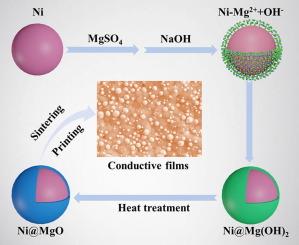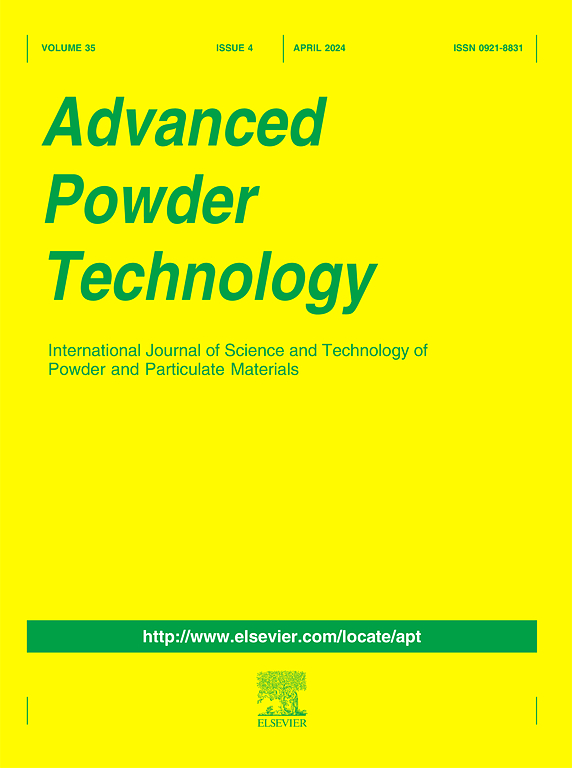Synthesis of Ni@MgO core–shell ultrafine particles for the fabrication of thick film electrodes
Abstract
Ultrafine Ni particles are important materials for the fabrication of electrodes for multilayer ceramic capacitors (MLCCs). However, the problems of particle oxidation and thermal shrinkage mismatch still need to be resolved. Herein, Ni@MgO core–shell ultrafine particles are prepared by a method in which Mg(OH)2 shells are coated on pre-synthesized Ni ultrafine particles by a chemical solution method. After heat treatment, the Mg(OH)2 shells decompose into MgO shells, and Ni@MgO core–shell structure is therefore formed. The as-prepared Ni and Ni@MgO core–shell ultrafine particles are further made into pastes, printed on ceramic substrate and sintered into conductive films. In comparison with pure Ni particles, enhanced performances of anti-oxidation and thermal shrinkage resistance are achieved for Ni@MgO core–shell particles. The sintered films made by pure Ni particles exhibits a severe shrinkage with a large area of disconnected regions whereas the Ni@MgO core–shell films show much better film integrality. The results suggest that coating MgO shells on Ni ultrafine particles to form a core–shell structure can be an effective way to reduce the thermal shrinkage and improve the integrity of Ni electrode for the potential applications of MLCCs.


 求助内容:
求助内容: 应助结果提醒方式:
应助结果提醒方式:


